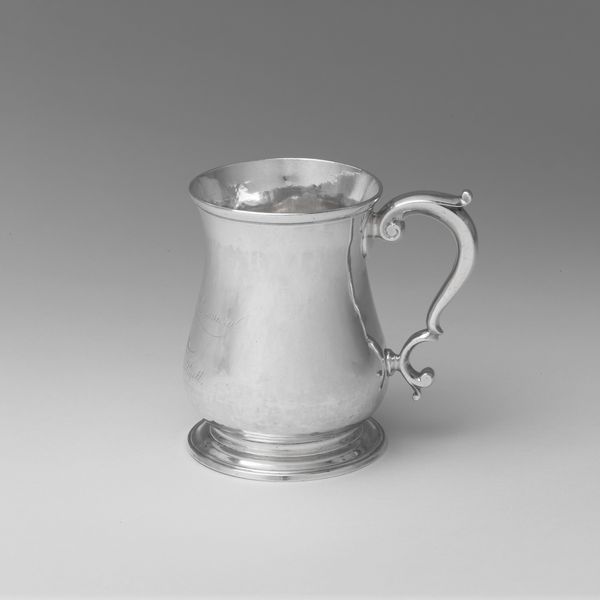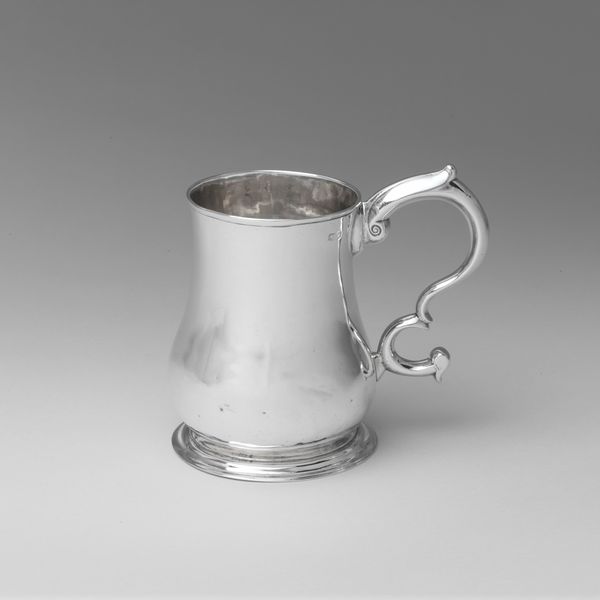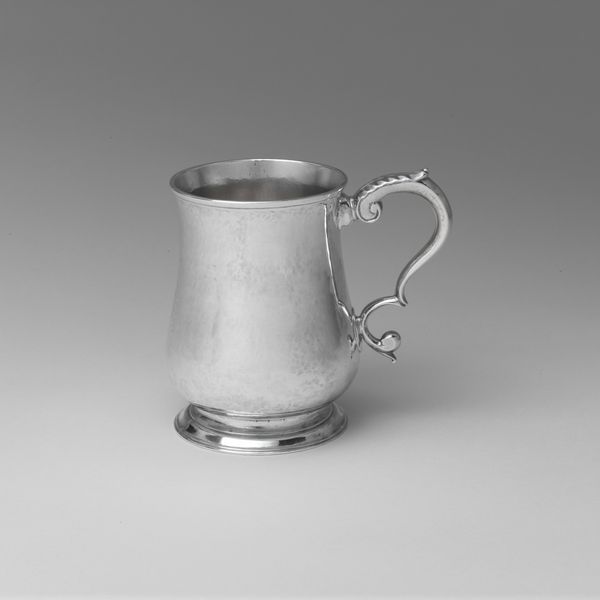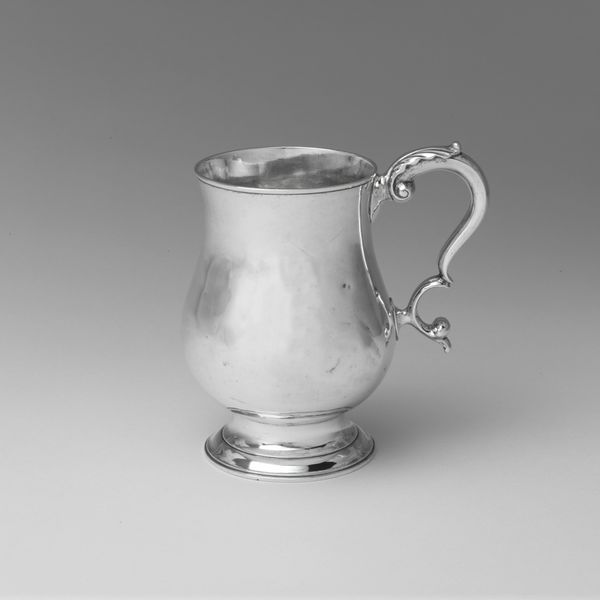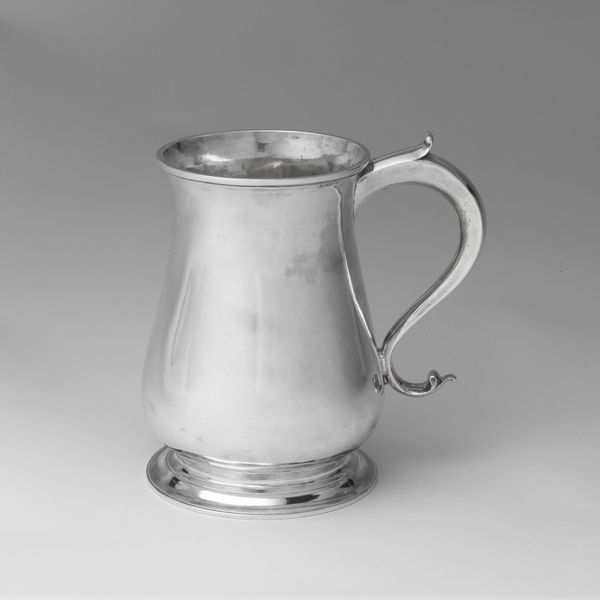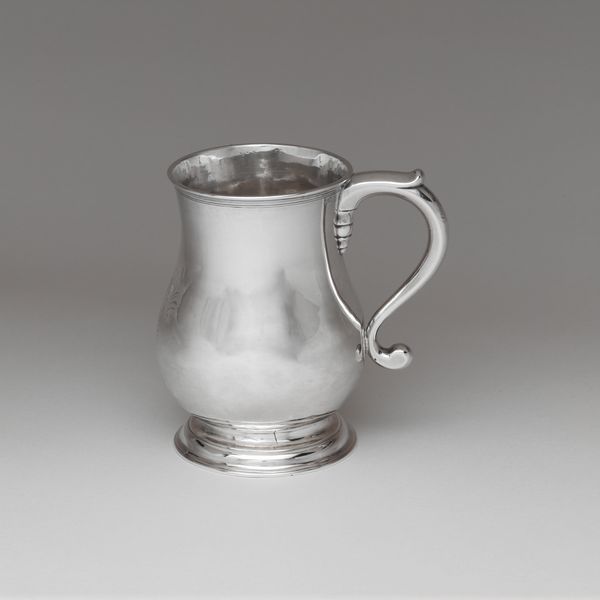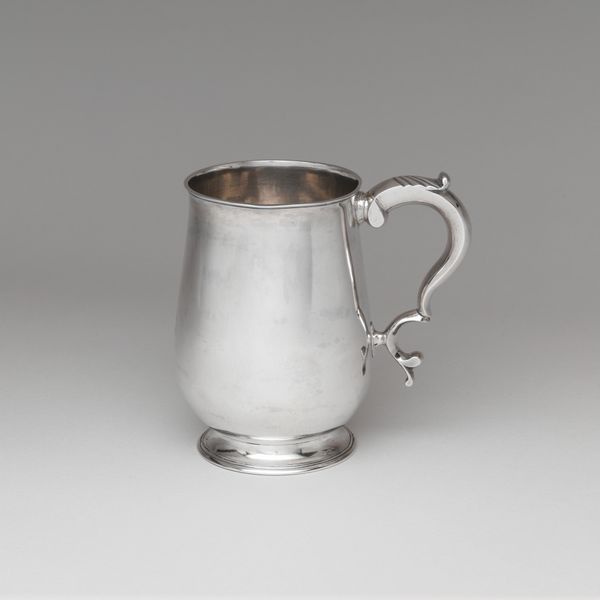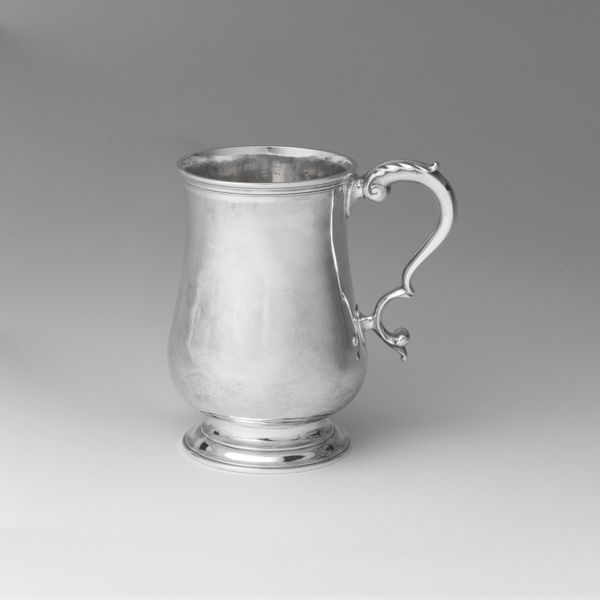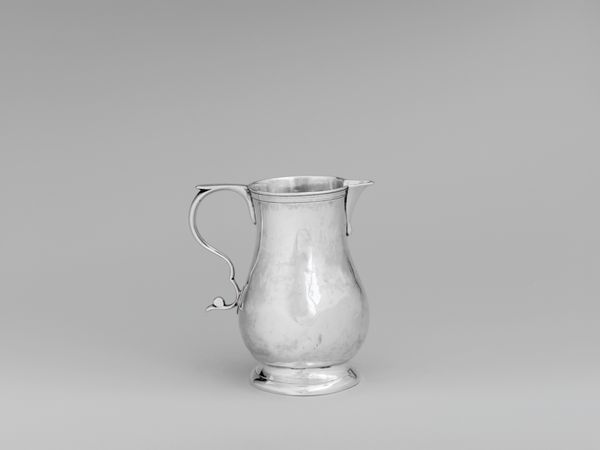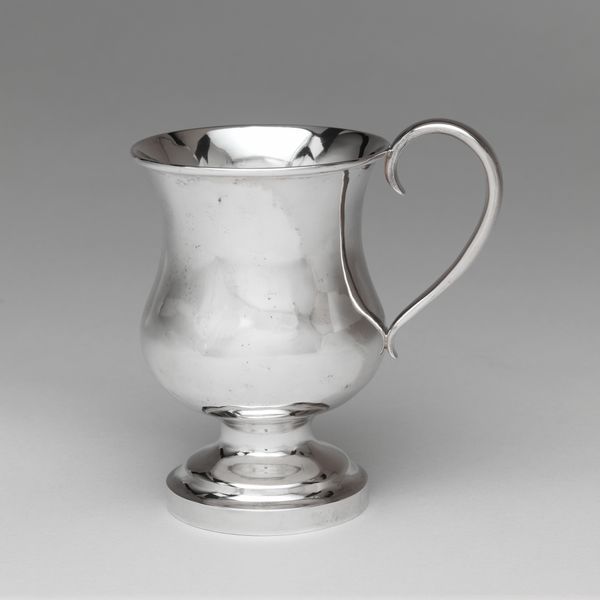
silver, metal, sculpture
#
silver
#
metal
#
sculpture
#
decorative-art
Dimensions: Overall: 5 x 5 5/16 in. (12.7 x 13.5 cm); 12 oz. 13 dwt. (394 g) Lip: Diam. 3 3/16 in. (8.1 cm) Foot: Diam. 3 7/16 in. (8.7 cm)
Copyright: Public Domain
Curator: This elegantly simple vessel, created by Samuel Minott around 1760-1770, is identified as a cann, currently held in the Metropolitan Museum. Something about the gleam and curvature appeals. What's your initial response to it? Editor: Polished, almost aggressively so. The reflection seems to swallow any real character of the silver. I am immediately wondering about the labor behind the polish: whose hands buffed this until it blinded? Curator: An interesting first impression. For me, there is a quieter aspect—it seems to me an object longing for use. There's an echo of human touch that transcends mere display, despite the silver and that impressive sheen you note. I imagine it holding something—ale or cider, perhaps? Editor: Well, a cann like this one reflects colonial trade and silversmithing in Boston. How was this silver acquired, what relations were at play, and who ultimately benefited? It represents a colonial economy steeped in consumption and display. It’s all tied into labor—the artisan’s skill, but also the resources that facilitated its creation. Curator: It whispers stories beyond trade and consumption, though those tales are important too. Looking at the curve of the handle, the lip so subtly flared, I feel a sense of artistry that elevates it. It's decorative, yes, but profoundly human, isn’t it? We look at it today not necessarily as a relic of some mercantile system. It sings. Editor: That "song" is structured by production! Look at that base. Note how it is constructed, the multiple pieces that comprise a “simple” vessel. Do you know how long it takes to get silver to gleam like this? Every detail required hours upon hours. Curator: Absolutely, and that’s part of the enchantment: hours poured into making an object intended for perhaps momentary delight—a vessel to raise in camaraderie or quiet satisfaction. Editor: Precisely! It’s a record of its own making—if we attend to that, that labour is enmeshed in social relations of power and economic disparity. The shine is never neutral. Curator: True, seeing the cann this way—understanding it embodies the tensions you speak of—only enriches its story. Thanks to you, now I won't ever see it simply as an elegant container.
Comments
No comments
Be the first to comment and join the conversation on the ultimate creative platform.
